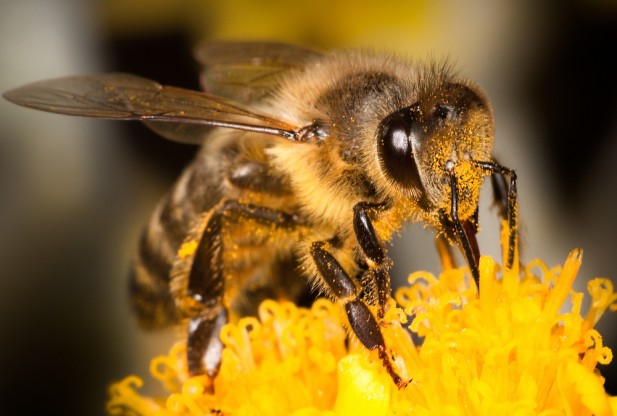Exploring the vast landscapes of North America unveils a bountiful array of wild fruits waiting to be discovered, regardless of your whereabouts. Nature’s hidden treasures are scattered throughout the year, offering tantalizing flavors that elude the shelves of grocery stores and farmers’ markets.
While Native Americans and early pioneers delighted in the pursuit and consumption of these untamed delights, the art of seeking out wild fruits has gradually faded in modern times. Regrettably, the allure and uniqueness of these flavors often go unappreciated in today’s fast-paced world.
The journey to uncover these exquisite fruits can be embarked upon with passion and curiosity, and it still fascinates me today, as it did in my younger years. Today, you have at your disposal an assortment of resources to aid in your quest, from books with detailed description and photos, to apps that will help you discover everything about a plant just by taking its photo.
Earn Your Food Independence NOW!
Alternatively, you can seek the wisdom of seasoned experts, whose invaluable advice can guide you towards fruitful destinations. State fish and wildlife biologists possess a wealth of information, while agricultural cooperative extension programs hosted by state universities serve as hubs of wisdom. Additionally, local historical and homesteading groups can provide insights into forgotten gems of the wild.
In your pursuit, it is vital to exercise caution and ensure your harvest is accurately identified. Nature’s palette can occasionally present deceptive lookalikes, concealing potential dangers among its vibrant hues.
While some may only disrupt your stomach, others can pose serious risks to your well-being. In the absence of an experienced local forager to act as a guide, it becomes crucial to consult multiple trustworthy guidebooks.
Cross-referencing your findings with the wisdom contained within these reliable books will grant you the confidence to proceed on your wild fruit journey, safeguarding against unintended consequences.
Embrace the spirit of exploration, immerse yourself in the diverse ecosystems of North America, and unlock the treasure trove of flavors that nature has carefully crafted for those willing to venture off the beaten path.
As you embark on this foraging journey, remember to celebrate the authenticity and distinctiveness of wild fruits, connecting to a time when our ancestors reveled in the untamed beauty of the natural world.
Fruits and their uses
Once you’ve successfully tracked down and gathered a variety of wild fruits, you might be wondering about the different ways to make the most of your harvest. The options are plentiful, and the potential for creativity is boundless. While enjoying the fruits as you pick them is a straightforward and delightful choice, there are many other culinary avenues to explore.
Beyond the realm of desserts, wild fruits can be incorporated into a range of dishes. Classic favorites like pies, tarts, and cobblers are a natural choice, but don’t limit yourself to sweet treats alone. Consider experimenting with a fruit reduction infused with balsamic vinegar, transforming grilled venison or wild turkey into a savory main course that tantalizes the taste buds. The combination of tangy sweetness and savory flavors will leave a lasting impression.
If your harvest yields an excess of wild fruit, why not try your hand at winemaking? Unleash your inner winemaker and turn wild muscadines, elderberries, mustang grapes, and other captivating wild fruits into wines that will impress even the most discerning wine enthusiasts.
While the availability of wild fruits may vary across different regions, it’s worth noting that many of these delightful treasures can be found in various forms throughout most of North America.
The North
If you happen to reside along the northern border of the United States, there are a few delightful wild fruits that might cross your path. Let’s take a closer look at each of them:
Wild Raspberries: Venture towards forest edges and grassy areas, and you may stumble upon the luscious bounty of wild raspberries. These vibrant delights thrive in areas that have recently experienced some form of disturbance, such as clear-cuts. As late spring approaches, keep a keen eye out for the transformation of these berries from pale white to a deep, inviting red. When they reach their peak ripeness, they become a delectable snack on their own or can be incorporated into mouthwatering treats like pies or cobblers.
Wild Blueberries: Similar to their raspberry counterparts, wild blueberries also make their appearance in comparable locations. However, they make their debut a bit later in the season, typically around mid-summer. Seek them out on sunny slopes at higher elevations, where they manifest in dense clusters of low-lying shrubs that embrace the ground. These wild blueberries are particularly exceptional when added to baked goods such as muffins or when gracing your morning pancake batter with bursts of natural sweetness.
Wild Blackberries: Thriving in various habitats, including open fields, forest edges, and disturbed areas, wild blackberries present another delicious option for foragers. These juicy and sweet berries usually ripen in late summer, and their dark purple or black color signifies their readiness for picking. Enjoy them fresh, use them in desserts, or create flavorful jams and preserves.
Wild Cranberries: Often found in wetland areas, such as bogs or marshes, wild cranberries are a tart and vibrant fruit that adds a unique twist to culinary creations. They typically ripen in the fall, turning from green to a deep red color. Harvested cranberries can be used in sauces, relishes, baked goods, or even enjoyed in refreshing beverages.
The South
When exploring the southern United States, keep an eye out for these delightful wild fruits that grace the region:
Wild Grapes: Along the southern Gulf coast, you’ll come across the popular mustang grape, while throughout the southeastern U.S., muscadines take the spotlight as the wild grape of choice. These grape varieties thrive in similar habitats, such as wooded edges and openings in the forest. One way to distinguish them is through their leaves: mustang grapes feature three-lobed leaves, while muscadines have single-lobed leaves with a more pointed shape. Both grape species are perfect for crafting delicious jams, jellies, and wines. As wild grapes grow in clusters, you can easily gather several pounds at once, allowing for ample culinary experimentation.
Dewberries: While resembling their close relatives, raspberries and blackberries, dewberries can be found throughout the southern U.S., flourishing in thick clusters of wild brambles. These berries can be utilized in a manner similar to blackberries, making them excellent additions to pies, desserts, wines, or even as reductions to accompany grilled meats. Indulge in their juicy goodness and let their flavors infuse your culinary creations.
Mayhaw: Native to the southern states, mayhaw berries grow on trees found in swampy areas and near riverbanks. These small, bright red berries are renowned for their tangy flavor. They are often used to make preserves, jellies, and syrups, adding a unique touch to breakfast spreads and culinary creations.
The Midwest
Blackberries: Similar to wild raspberries, blackberries thrive in tangled masses of thorny brambles, dotting open fields, forest edges, and timber cutovers. Keep an eye out for blackberries to ripen in the mid-summer, transitioning from green to red, deep purple, or even black. I recommend protecting yourself from the thorny bristles by wearing long sleeves and heavy jeans. Enjoy them in classic desserts like cobblers or pies. If you want to experiment with blackberries, I recommend simmering a couple of cups of blackberries with sugar and water, then drop in clumps of biscuit dough until they’re cooked through, resulting in a perfect summer dessert.
Wild Strawberry: In the upper Midwest and northern U.S., wild strawberries can be found in late spring. Seek them out in sunny open areas of dense forests and along forest edges. When identifying wild strawberries, look for the presence of a white bloom before the fruit sets. Crush a wild strawberry, and a strong berry fragrance will permeate the air. However, exercise caution as “Indian strawberries” or “mock strawberries” bear a striking resemblance to wild strawberries. To differentiate the two, keep in mind that mock strawberries have yellow flowers instead of white, and their crushed fruit lacks a distinctive fragrance. While mock strawberries won’t cause digestive issues, they lack the flavor that makes wild strawberries so delightful.
Mulberries: While resembling blackberries and raspberries, mulberries can be found growing on trees or small shrubs. Keep an eye out for their ripening in mid-summer along forest edges where they receive ample sunlight. Mulberry trees exhibit a range of leaf shapes, from deeply lobed to almost round or pointed, sometimes on the same tree. If you’re fortunate enough to locate a tree brimming with ripe mulberries, be vigilant since birds and squirrels are fond of these delicious fruits and can strip a tree clean within a day of ripening.
Persimmons: Similar to mulberries, persimmons adorn small trees along forest edges. The fruit, slightly smaller than golf balls, begins to ripen in late fall. Persimmons require exposure to cool temperatures to ripen fully, with the first light frost often being an ideal indicator. Beware, unripened persimmons possess astringent qualities and can leave you with a serious pucker factor and mouthfeel when consumed. It’s advisable to taste a few before picking to ensure they’re ready. As with mulberries, wildlife such as squirrels, coyotes, foxes, deer, and especially raccoons hold a strong affinity for ripe persimmons, so the window between ripening and wildlife enjoyment is narrow. Quick and timely picking is essential.
Pawpaw: Pawpaws flourish along creek bottoms and timber openings across the eastern Midwest and the Appalachian mountain range. Many mountain towns even hold pawpaw festivals in the fall to celebrate their ripening. Pawpaws have an unusual appearance being egg-shaped and often reaching lengths of 10 inches or more, with flesh that bears a texture akin to bananas. Their flavor is frequently described by many people as a delightful blend of banana and mango. Utilize them in recipes where bananas would work splendidly, and don’t miss the opportunity to indulge in the exceptional delight that is pawpaw pudding.
The West
Even in the rugged landscapes of the Wild West, nature generously offers an array of wild fruits waiting to be discovered. Here are a few to seek out, along with some additional treasures from the region:
Salmonberry: Thriving primarily in the Pacific Northwest, the salmonberry is another compound berry that grows on thorny brambles. Scan sunny hillsides and explore stream openings within alder forests to locate these gems. The ripening period for salmonberries spans from late May to July, varying depending on the location and species. When ripe, they display a spectrum of hues, ranging from pinkish orange to deep red. Embrace their unique flavors and vibrant colors as you uncover these wild treats.
Huckleberries: Growing abundantly in the mountainous regions of the West, huckleberries are often considered a prized find. These small, round berries come in various colors, including red, blue, or black, depending on the species. They possess a sweet-tart flavor and are commonly used in pies, jams, and preserves. Foraging for huckleberries can be a delightful adventure, rewarding you with their delicious taste and the satisfaction of gathering nature’s bounty.
Wild Plums: In certain parts of the West, wild plum trees can be found along riverbanks, hillsides, and even in the open grasslands. These small, juicy fruits offer a delightful balance of sweetness and tartness. They are excellent for making jams and preserves or even used in savory dishes as a unique flavor component.
Prickly Pear Cactus: Native to the arid landscapes of the southwestern U.S., the prickly pear cactus boasts fruits that resemble small pears, hence the name. While the entire plant is edible, harvesting the fruit requires caution, and it’s an experience few people dare to try. Equip yourself with heavy leather gloves or metal grill tongs to protect against the cactus’s sharp spines. Once you’e got the frtuit, slice it down the center and use a knife or spoon to carefully extract the flesh from the prickly skin. Be mindful of the fruit’s small, hair-like tufts, composed of thousands of tiny spines that can embed into the skin. Prickly pear fruit flesh can be consumed raw, including the seeds, though some prefer to remove the seeds before indulging. Alternatively, the fruit pulp can be transformed into delightful jellies or mixed with vinegar to create flavorful salad dressings.
Concluding
The wild fruits of various regions offer a diverse array of flavors and culinary possibilities. From the tartness of raspberries to the sweetness of blueberries, the allure of blackberries and strawberries, and the unique qualities of mulberries, persimmons, and more, these fruits can be enjoyed fresh or incorporated into a variety of dishes.
Whether it’s pies, jams, wines, or other creations, these wild treasures add a touch of nature’s goodness to our tables. However, it’s important to forage responsibly and seek proper identification to ensure safe enjoyment. So, let’s embrace the wild and embark on flavorful adventures that connect us with the landscapes around us.








![10 common plants you can turn into flour [Part I] 12 shutterstock 374664940 edited](https://modernsurvivalknowledge.com/wp-content/uploads/2024/04/shutterstock_374664940_edited-796x445.jpg)
![10 common plants you can turn into flour [Part II] 14 shutterstock 376265131 edited](https://modernsurvivalknowledge.com/wp-content/uploads/2024/04/shutterstock_376265131_edited-796x445.jpg)